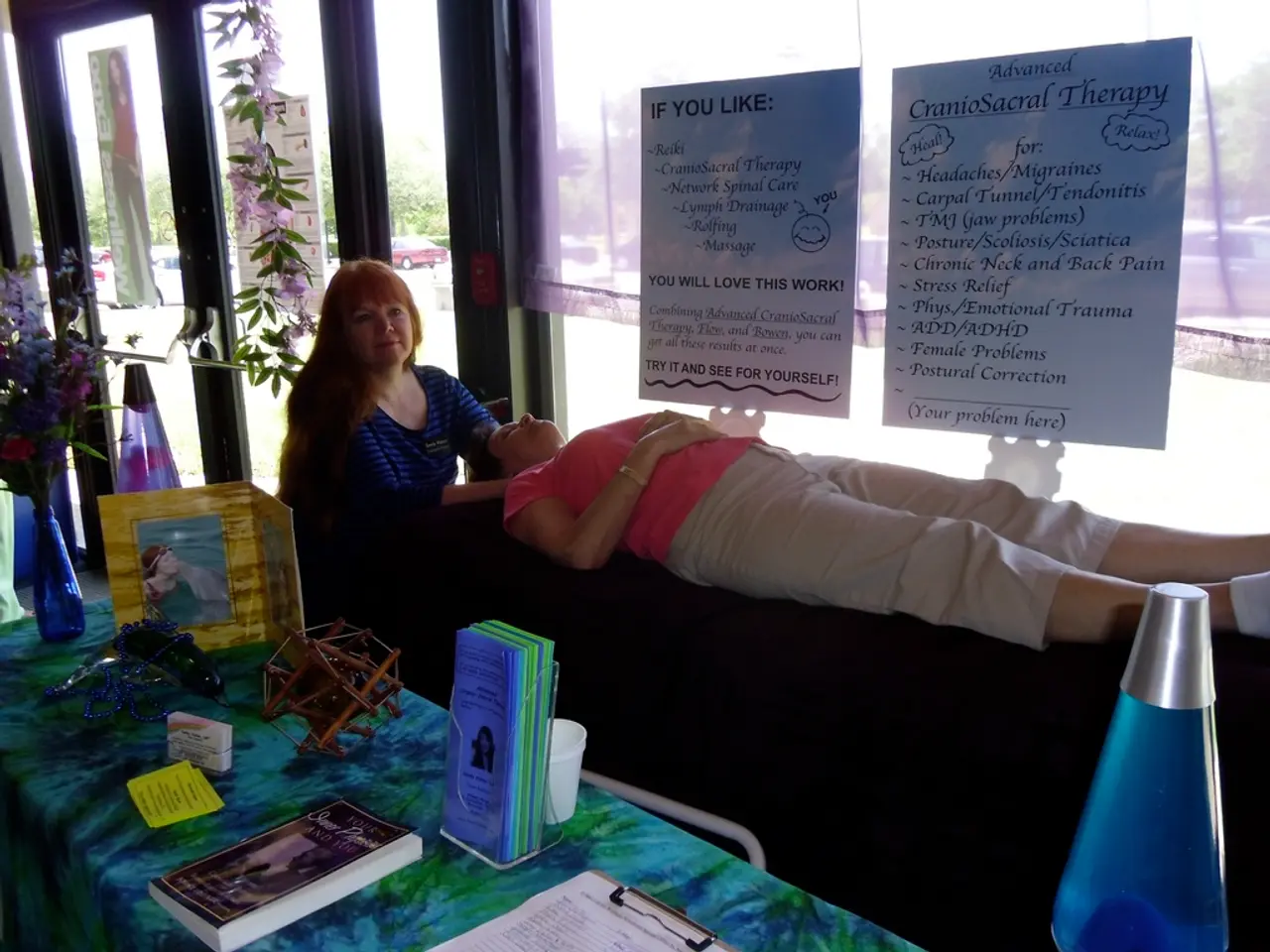Treating Phobias: The Power of Exposure Therapy and Cognitive Behavioral Therapy (CBT)
Exploring Varieties of Phobia Treatment: An Overview
Exposure therapy and cognitive behavioral therapy (CBT) are two highly effective treatments for phobias, offering systematic methods to reduce fear and avoidance behaviors. These treatments, widely recognised as evidence-based interventions, have shown significant success in managing phobias.
Effectiveness and Methods
Exposure Therapy is a process that involves the gradual and repeated confrontation of feared objects or situations in a safe, controlled environment. By breaking the cycle of avoidance and anxiety, the brain learns that the feared stimulus is not harmful, leading to habituation and new, nonthreatening associations. The process typically follows a graded hierarchy, starting from least to most anxiety-provoking exposures, which can be in vivo (real-life), imaginal, or interoceptive [1][4].
Common formats include: - In vivo exposure: Direct, real-world interaction with the feared stimulus. - Imaginal exposure: Visualizing the feared situation. - Virtual Reality Exposure Therapy (VRET): Immersive simulation that allows safe, repeatable exposure to fears like heights or flying, often combined with CBT techniques, increasing accessibility and treatment adherence [2][3][5].
Extensive randomized controlled trials show that exposure therapy produces large, durable reductions in phobia symptoms and avoidance behaviors, making it a frontline treatment within CBT frameworks [1][2].
Cognitive Behavioral Therapy (CBT) combines exposure techniques with cognitive restructuring, helping individuals identify and challenge maladaptive thoughts related to their fears. CBT also incorporates relaxation strategies (deep breathing, progressive muscle relaxation, mindfulness) to manage physiological anxiety symptoms during exposures [4][3].
Exposure is most effective when it is predictable and controlled by the client, allowing for gradual progress. It should be frequent and prolonged, lasting long enough during sessions for fear responses to decrease. Practicing in different contexts helps generalize coping skills beyond therapy sessions [4].
Finding the Right Therapist
Finding a therapist experienced in exposure therapy and CBT for anxiety and phobias is crucial. A therapist should create a safe, supportive, and nonjudgmental environment, essential for tolerating distress during exposure [5]. They should also be open to incorporating innovative tools like virtual reality if relevant to the phobia and client needs [2][5].
You can find therapists by searching professional directories or associations specializing in anxiety disorders or CBT. Asking for referrals from healthcare providers is another option. Confirming credentials such as certification in CBT or anxiety treatment, and experience with phobias is essential. Consider logistical aspects like location, availability, and insurance coverage. Scheduling an initial consultation to assess comfort level and treatment approach alignment is also important [6].
Mindfulness techniques, such as meditation, breathing exercises, and progressive muscle relaxation, may help lessen the severity of fear that a person feels during a phobic episode. According to a small study, mindfulness techniques in combination with CBT showed promise in improving the social phobia of the study participants [7].
With around of adults in the United States experiencing a phobia at some point during their lifetime, these treatments offer hope for many individuals struggling with phobias. Exposure therapy and CBT represent well-supported, systematic approaches to effectively treat phobias by directly addressing and reducing fear responses through controlled, repeated exposure combined with cognitive techniques. Finding a qualified therapist who uses these evidence-based methods and with whom the patient feels comfortable is key to successful treatment.
[1] Barlow, D. H., Craske, M. G., Cerny, C. A., & Stein, M. B. (2000). Anxiety disorders and trauma: A case for cognitive behavioral therapy. Annual Review of Clinical Psychology, 6, 425-454.
[2] Hresko, C., & Telch, C. F. (2005). Virtual reality exposure therapy for specific phobias. Current Psychiatry Reports, 7(4), 317-322.
[3] Rothbaum, B. O., Hodges, T. L., & Cohen, M. L. (2000). Virtual reality exposure therapy: A review of the literature. Behavior Therapy, 31(1), 1-24.
[4] Foa, E. B., Hembree, E. A., & Rothbaum, B. O. (2007). Effective treatments for anxiety disorders: Practice guidelines from the International Society for Research in Traumatic Stress Studies. Depression and Anxiety, 24(2), 89-106.
[5] Goldstein, R. B., & Chambless, D. L. (2012). The science of psychotherapy: A guide to the evidence-based assessment and treatment of mental disorders. American Psychological Association.
[6] Association for Behavioral and Cognitive Therapies (ABCT). (n.d.). Find a therapist. Retrieved from https://www.abct.org/find-a-therapist
[7] Hofmann, S. G., Gomez de Acuna, J., Arendt, J., & Forsyth, J. P. (2012). The effects of mindfulness-based therapy on anxiety and depression: A meta-analytic review. Journal of Consulting and Clinical Psychology, 80(4), 569-582.
- The gradual and repeated confrontation of feared objects or situations in controlled environments, such as virtual reality, is a fundamental aspect of exposure therapy, which has shown significant success in managing phobias.
- Cognitive Behavioral Therapy (CBT) combines exposure techniques with cognitive restructuring, helping individuals identify and challenge maladaptive thoughts related to their fears while also incorporating relaxation strategies like mindfulness.
- Finding a therapist who is experienced in exposure therapy and CBT for anxiety and phobias is crucial, as they should create a safe, supportive, and nonjudgmental environment and be open to incorporating innovative tools like virtual reality if relevant to the phobia and client needs.
- Mindfulness techniques, like meditation and breathing exercises, may help lessen the severity of fear during a phobic episode and could potentially even improve symptoms of social phobia when combined with CBT.




